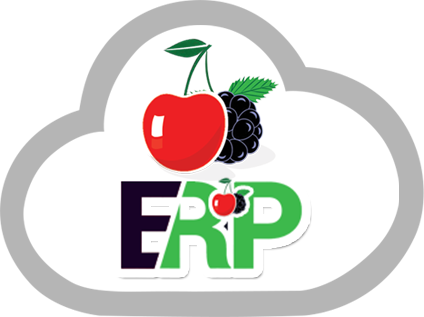
Point of Sale Software: A Complete Guide
In the past few years, a lot of transitions have been made in the Point-of-sale software on digital platforms. The POS software system is not only used for transaction purposes but it also designs your communication and integration with the customers and also helps in managing your daily tasks. According to a Grand View Research report, the global POS software market has crossed nearly USD 12 billion in 2022, which shows its biggest hype in the past few years. Its vast capabilities can never be ignored as it can manage your inventory, sales reports, and customer interactions, and improves your overall workflow. Having a multifunctional nature, this software can perform several complex tasks to boost your work efficiency.
This blog post will help you learn the details of POS software, how it works, its usage, and tips to choose the right one for your business.
Point of Sale Software System
Point of Sale software is a digital solution because it aids the business in managing and overseeing sales transactions. For this purpose, POS software uses other hardware devices such as receipt printers, barcode scanners, and card readers. They help finalise sales. You can operate POS software using various devices such as smartphones, tablets, and traditional registers. In this way, customers can access their data from various devices anytime, anywhere.
For What Purpose Is POS Software Used?
Point of sale software focuses on the digital functions for different business operations like transaction processing. But we are sharing a detailed list of the uses of POS software.
1- Transaction Processing
The core function of POS software is to manage the sales transaction including calculating totals, raising items, and processing payment forms such as debit cards, credit cards, and digital wallets.
2- Sales Reporting and Analytics
With the help of POS software, you can make informed decisions regarding staffing, marketing, and purchasing because this software can peak transaction times and popular products and present data on sales trends.
3- Employee Management & Tracking
Point of sale software can also be used to keep the record of employees including the record of logging hours, calculating features, and setting sales targets.
4- Inventory Management
POS software also keeps a record of sold items to track the availability of items in stock. This helps in preventing items from being out of stock and also facilitates reorder schedules.
5- Customer Management
A lot of point-of-sale software can cultivate better relationships with the customers by keeping track of their data including their preferences and purchase history. This leads to better customer service.
6- Order Management
This is specially designed for restaurants or service-based establishments where POS software is responsible for managing orders, reservations, table assignments, and service schedules. This helps in ensuring smooth operations and enhances customer satisfaction.
Overall, point-of-sale software works like a digital brain to facilitate smoother transactions and provide data to improve business operations.
How Does POS Software Work?
POS software can manage various functions to streamline business transactions. Here are in-depth breakdowns of how it works.
1- Transaction Initiation
This is the first step in which the customer makes a purchase and the sales associate enters his item into the system manually or by scanning a barcode to create a digital record of his sale.
2- Price Calculation
Now, the software calculates the total cost, including any applicable discount or promotion. Taxes are added according to the location and the product.
3- Payment Selection
After price Calculation, the payment method is decided by the customer, as POS offers a variety of payment methods, such as credit cards, debit cards, and digital wallets.
4- Authorisation & Confirmation
If the card of the customer is valid and checked against the credit institution, the transaction is authorised. After that, a confirmation message is displayed on the POS software screen, and a printed receipt is generated.
5- Data Sync and Backup
All the transaction data and metrics are regularly synced to the cloud to ensure safety. This also allows the user to access from different devices and various locations.
A Guideline to Choose the Best POS Software
Here is a complete guide and tips that can be very helpful to you while choosing POS software.
1- Operational Requirements
Firstly, you have to look at your business requirements and what you need to grow your business. For instance, a red restaurant will look for order customisation, and a retail store will prioritise a smooth checkout process. If you are precise about your needs, your choices will be narrowed down.
2- Hardware & Software Attributes
Always choose the compatible software that can adjust according to the hardware you are already using. Keep in mind that the chosen software should also integrate with devices such as receipt printers, cash drawers, and barcode scanners. Also, choose the multifunctional software that can adjust easily with multiple devices.
3- Cost Assessment
Always choose suitable POS software that aligns with your business model. There are different POS systems in the market, some charging per transaction and some with monthly fees. Choose the one that suits your budget.
4- Security Implications
Security implication is a major factor that can not be compromised. So choose the one that can protect your data by using end-to-end encryption measures.
5- External Feedback
It is an important step while choosing the POS software to gather external feedback. Always check out customer reviews and look in the market for what other businesses are doing. This will help you in getting deep insights into the reliability and performance of the POS system that you are going to choose.
Conclusion
Point of sale software is a revolutionising invention of the century that has changed the game of your retail business. It works as an essential tool for your business if you want to thrive in this retail landscape. This software keeps all the records of payments and transactions of the customers and then stores the data for future use. It is very useful for small as well as large businesses such as restaurants or retail businesses. POS software reduces impropriety in the business and enhances its efficiency by keeping in touch with the customers. The above-mentioned paper has already delved into the uses, workings, and functions of POS software.
If you are looking for the most suitable point-of-sale software, visit CherryBerry ERP to get the best software in town. You will never feel dissatisfied after using our services.
